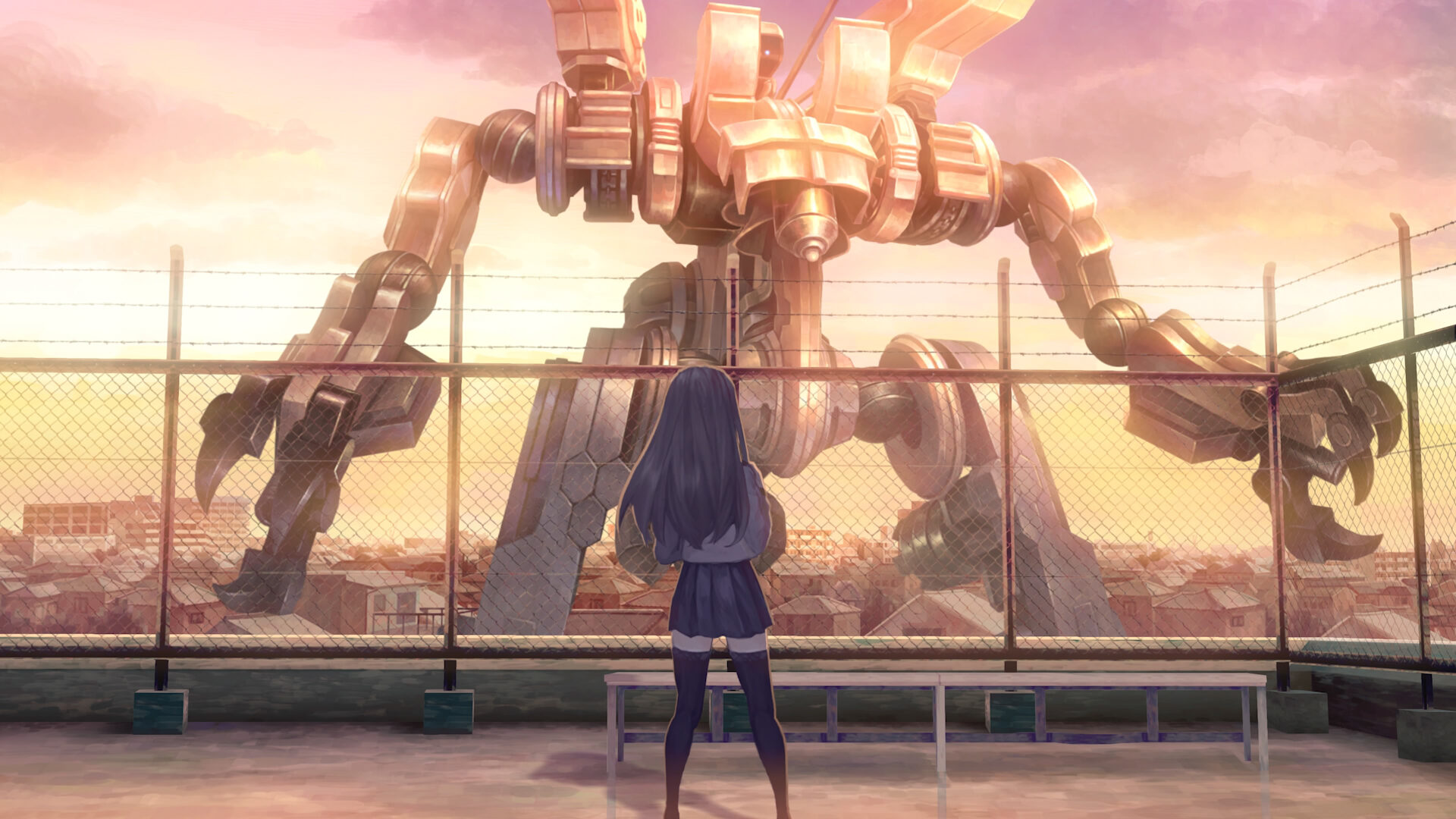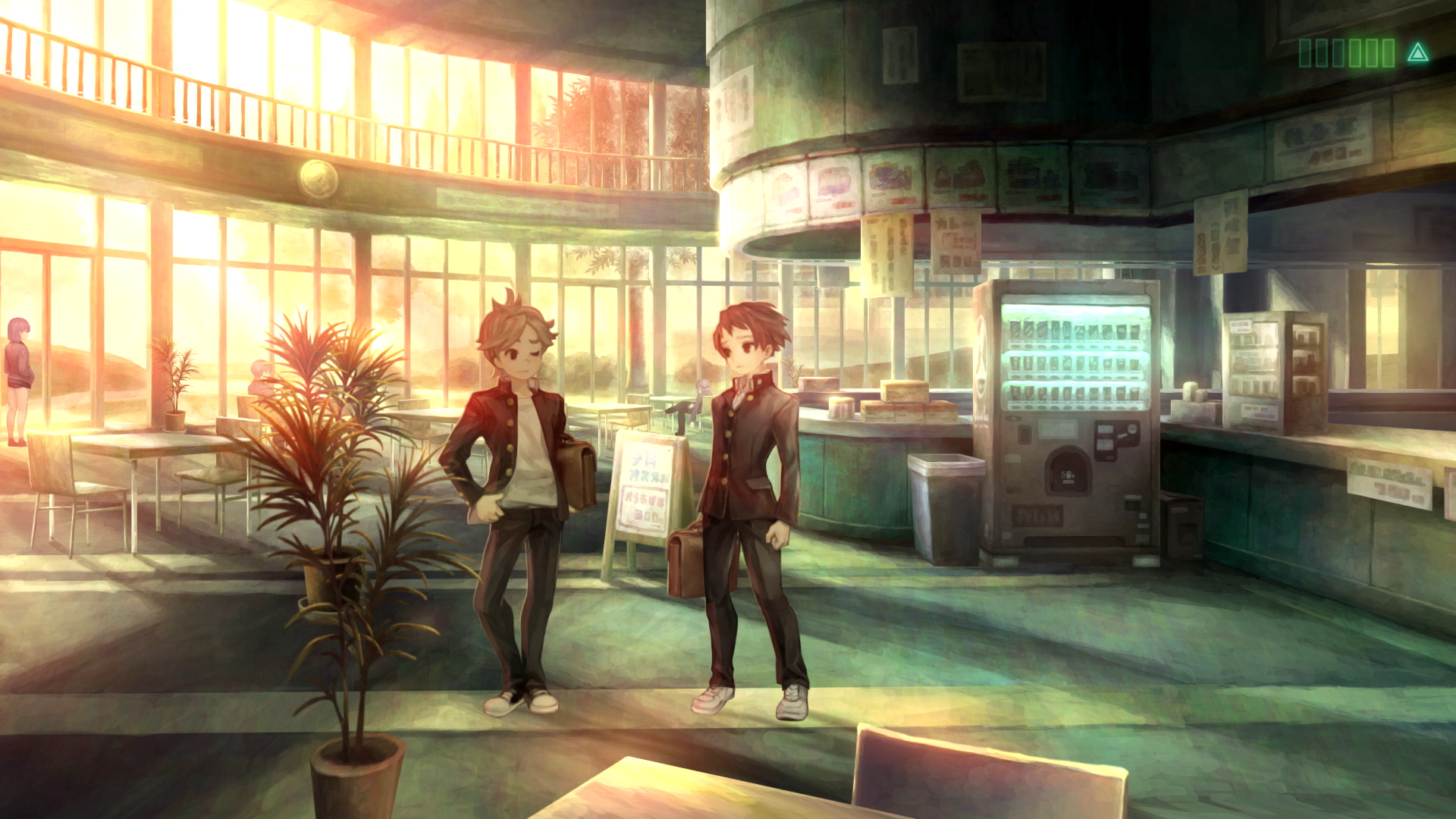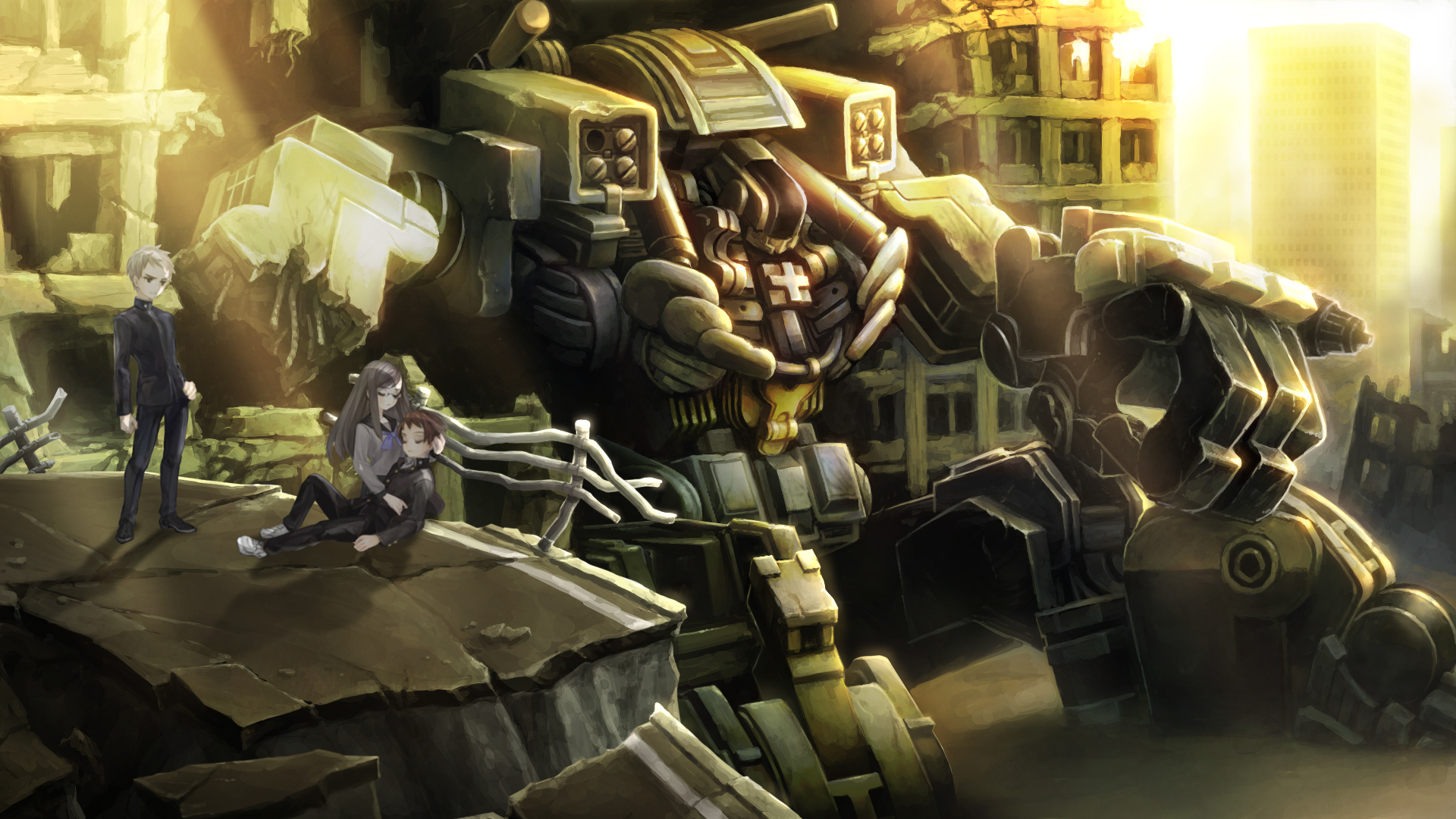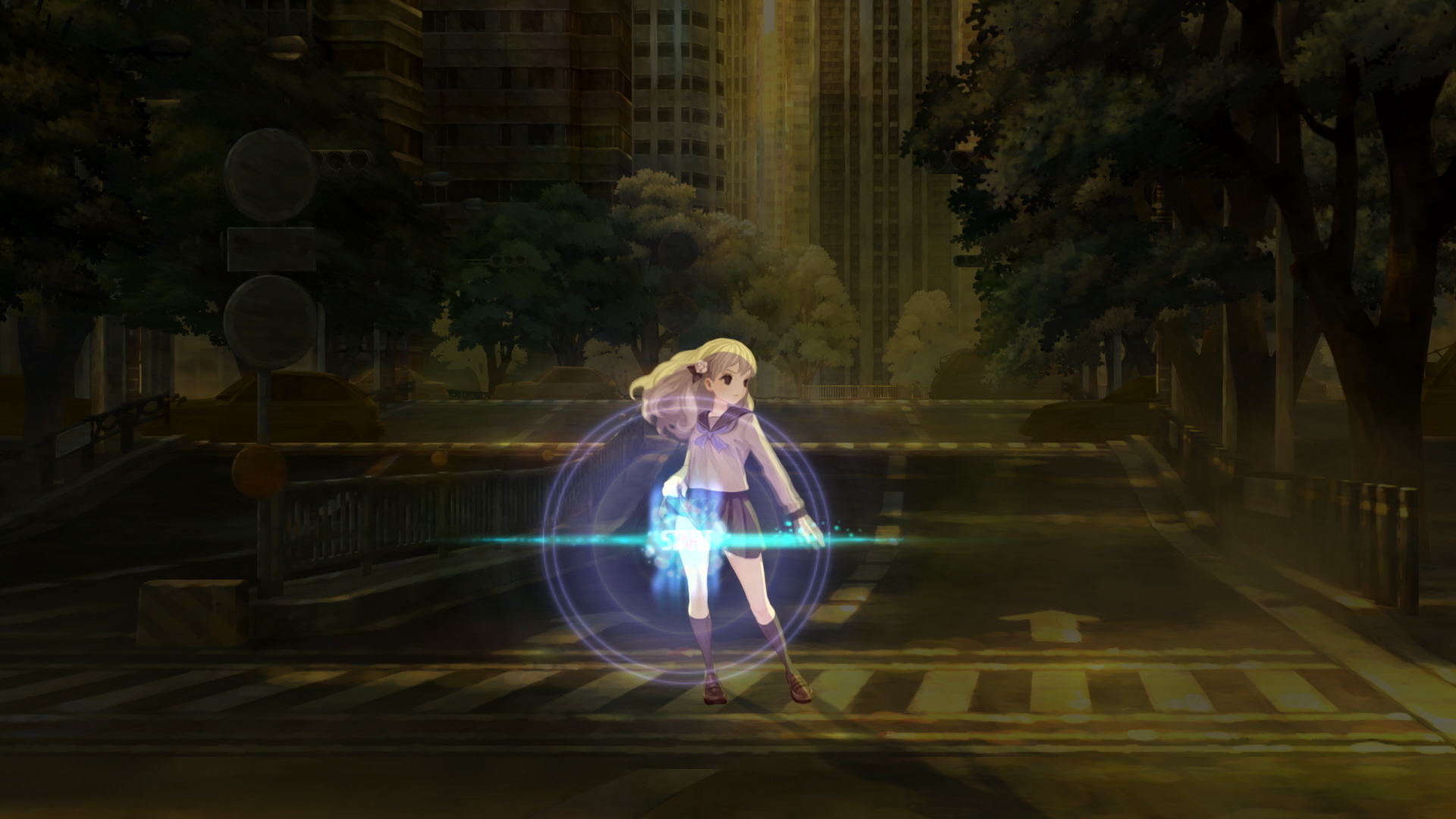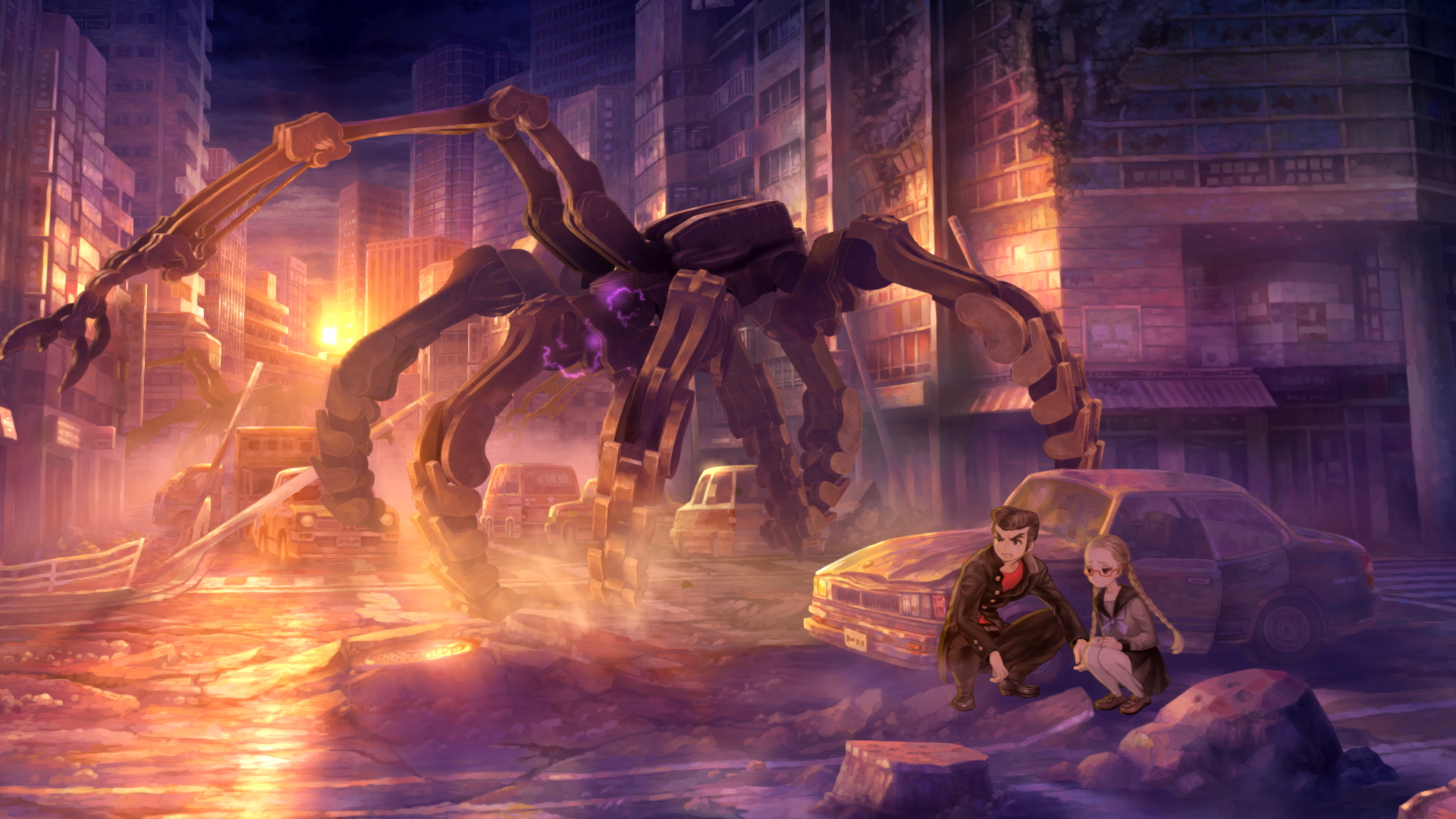13 Sentinels: Aegis Rim Review
If you’re making a list of interesting Japanese developers, Osaka’s Vanillaware has to be near the top. Headed by founder, game director, and artist George Kamitani, the studio has stood as one of the last bastions for indulgent 2D gaming experiences while most of the rest of the industry has moved on to 3D. Though Kamitani may be infamous for his love of the female body, he’s also known for helping to bring to life games that other developers would probably never dare to attempt.
And yet 13 Sentinels: Aegis Rim still feels daring for a studio where daring is the norm. From his early work on the Sega Saturn release Princess Crown while at Atlus, to nearly everything Vanillaware has done up until now, Kamitani and his team have traditionally crafted tales based on fantasy settings filled with knights, dragons, and magic. 13 Sentinels, meanwhile, drops us into a more technologically advanced era where giant mecha battle terrifying kaiju from outer space.
Normally, this would then be the part where I’d launch into a synopsis of the story, during which I’d introduce the main character and his or her place in everything that unfolds. The problem is, there isn’t a main character here—there are thirteen. The game’s titular 13 Sentinels, the giant robots of mysterious origins that are now all that stand between humanity’s survival and certain doom, each need a pilot. Thus, the focus is on how all thirteen of those willing (or sometimes unwilling) teenagers come to control thousands of tons of kaiju-killing steel.
Under other circumstances, a game would introduce us to each of those main characters one at a time, focusing first on one who is clearly the “main” hero, and then maybe shifting to play as the others during important moments in their journeys. In 13 Sentinels, we’re instead introduced to all thirteen from the very beginning, and asked to complete each chapter of their individual stories in whatever order we please—outside of a few times when the game specifically locks off progress for one character to avoid spoilers you’ve not seen yet via another.
No matter who you choose at any given moment, the major chunk of the game—”Remembrance” as it’s called, the first of three separate modes you can pick from the main menu—plays out under the same conditions. Characters and backgrounds come to life through Vanillaware’s always gorgeous art style, and each sprite-based student can wander their current environment to talk to NPCs, look for clues, interact with items, or move on to other areas.
I keep wanting to call 13 Sentinels a visual novel, which isn’t quite the right genre label, but also kinda is. Basically, the core of the experience is dialogue. Lots and lots of dialogue. At least 25 of my 34 hours playing had to have been spent engaging in conversations, but like most good visual novels—and unlike so many JRPGs—that dialogue usually has value and purpose. If the idea of spending so much time talking sounds like a bore, the rest of the game’s more traditional gameplay won’t be enough to win you over. If, instead, you’re the type who obsesses over character relationships and interactions in games, then there’s plenty of both here, with the story segments always leaving you wanting to know what’s going to happen next.
There is also that more traditional gameplay in 13 Sentinels, and the first example of that comes through the choices you make. Choice here can be something as simple as moving close enough to eavesdrop on a conversation a group of students are having, or it can be as big as deciding who to trust. However, unlike some other games, nearly every potential path here is a valid one, and leading each student to their personal journey’s conclusion will only come by finding out what waits at the end of each of those branches.
The other major gameplay element to 13 Sentinels is a second selectable mode called “Destruction.” Playing out as a top-down, real-time strategy game, Destruction sees our thirteen heroes and heroines climb into their towering Sentinels in order to stop the invading monsters—known as Deimos—directly. Sentinels come in four types: the stronger, melee-focused 1st Generations; the “good at everything, expert in nothing” 2nd Generations; the long range-focused 3rd Generations; and the flight-enabled 4th Generations, who, while the weakest defensively, have the longest movement range and best attacks for taking out airborne enemies.
13 Sentinels’ Destruction mode isn’t the most complex strategy game I’ve ever played, but it has an addictive charm. At the start of each wave, you pick six students to directly control, while the rest hang back to automatically defend each map’s base. As every character, and thus every Sentinel, can unlock a unique combination of attacks and abilities, choosing the right team for the right situation becomes both crucial and fun. And, lest you think you can just take the same higher-level handful of teammates out every time, each student can only participate in a certain number of battles before they need to recover from the stress. On the easier difficulty, that means having to mix up your playstyle, but never being too worried about making the wrong choices; at the higher levels, wrong roster choices can mean quick death.
How you split your time between Remembrance and Destruction is mostly up to you. From a narrative angle, both modes provide clues to what’s going on in this world, as well as context for the events unfolding over in the other mode. At first, I really wasn’t sure if having two completely different halves would make for a cohesive whole, but the further I got, the more I appreciated the split. Whenever I was feeling overwhelmed by Remembrance’s exposition dumps, I’d head over to Destruction and blow stuff up. And then, when I tired of fighting wave after wave of Deimos, I’d head back over to Remembrance to find out how later pieces of the adventure would unfold.
Given that both modes tell quite a bit of story in their own separate ways, it can take a lot of effort to keep everything straight as you’re jumping back and forth—especially if your progression on both sides isn’t going at the same pace. Instead of helping keep things clear for you in those moments, however, Kamitani and crew gleefully ramp up the plot complexity even before you’ve barely had a chance to get acquainted with your entire team. And there’s one method in particular they seem to love using to throw your brain into chaos: time.
As a basic concept, time is the way we humans measure, record, and predict the passing of one moment to the next, and the next, and the next. And yet, our perception of time can become incredibly skewed even from the smallest of factors in our lives. Things can get especially complicated when our larger grasp on the flow of time gets disrupted, and that’s one of the central gimmicks that complicates all those storylines even further. First, the game takes place not in one year, but several, all spread apart by 40 year gaps starting from 1945 (right as World War II is soon to come to an end). The cast find themselves jumping from one time period to the next, not in a linear fashion, but back and forth—either willingly, or by force or accident—up until judgement day arrives.
Except that, even right from the very beginning of the game, we aren’t always seeing those non-linear movements in a linear fashion. In what is either a brilliant narrative device or obnoxiously overused gimmick depending on who you ask, Vanillaware does its best Tarantino impression by continually mixing up what we’re seeing when throughout most of the story.
Thirteen narrative arcs, each constantly intersecting with one another, told across multiple eras, all presented in a way that can still be somewhat hard to fully comprehend even by the time we’ve reached the end. It’s a whole lot to ask of us, especially as we begin to ask ourselves if the experience is worth the effort.
It is worth it—mostly. Given the fact that everyone from friends of mine on Twitter to famous gaming personalities such as Nier Automata creator Yoko Taro have endlessly sung the praises of 13 Sentinelssince its Japanese release late last year, it was hard for me to avoid high expectations going into the game.
Beyond anything else, it’s impressive (and honestly somewhat shocking) that a story which boasts thirteen major characters is able to make all of them legitimately interesting. In basic design, they all look like they’ve come straight from a list of Japanese protagonist tropes. And yet, even if some of them are never able to truly break free of those tropes, Vanillaware’s writers gave all of the central characters enough depth and personality to win me over. Hell, even poster boy Juro Kurabe—the epitome of the “young boy hero destined for greatness”—grows into someone far beyond what I had him pegged for initially.
On the other hand, even as 13 Sentinels: Aegis Rim’s story reaches its craziest moments—which I can’t even begin to explain without a flood of spoilers and secrets—it surprisingly never reaches unexpected territory. About halfway through, it’s possible to guess most of the biggest twists that are coming—in part because Vanillaware directly tells us many of those twists far sooner than expected. I kept waiting for that one final surprise that would then upend everything I thought I knew (or suspected). And yet, it never came.
It’s hard to get a full read on where George Kamitani and his team were coming from on 13 Sentinels. I mean, I don’t know that the experience was supposed to hinge on a big late-game secret that would completely change our perception of its events. Perhaps, instead, the team simply meant this to be a story about humanity, and how people can find the strength to push back against a world that deceived them and set them up to fail at every turn. Perhaps all those crazy twists were simply vehicles used for reaching that goal.
Unfortunately, when the story works, it works because of its strong characters; when it fails, it does so because of that incredibly convoluted plot. Vanillaware gleefully stacks plotpoint atop plotpoint until the narrative is a towering, unstable monstrosity ready to topple at any moment. I think there was simply too much attempted here, especially given how disjointed and unpredictable our path through all thirteen stories can be.
The game’s third and final mode, “Analysis,” serves as an archive for terms, characters, and story segments you’ll encounter while playing—and being fair, it genuinely tries to be a helpful tool for keeping everything straight or remembering what you may have forgotten. However, it just doesn’t go far enough. Give us the “13 Sentinels for Dummies” option somewhere. Have a video of Kamitani pop up after beating the game to tell us, as if he were talking to children, a general synopsis of everything we’d experienced. I’m all for leaving stories a bit ambiguous, or letting the player draw their own conclusions about key events or characters. There’s just so much going on here, though, that even stringing together the basic facts of the game’s events can be a herculean task.
And yet, at the end of the day, 13 Sentinels’ narrative complexity isn’t its real problem—and maybe isn’t even a problem at all depending on your tastes. Its problem is that, as I watched the credits roll after a surprisingly satisfying ending, I realized the game had never had “that” moment.
One of the reasons I’ll never stop loving Japan’s game creation scene is that the creativity and daring of its developers can produce experiences that feel different from all other games out there. When I think about my favorite Japanese games, I think of titles like Danganronpa, where once the true scope of what was happening sunk in, it nearly broke my brain. Or like Corpse Party, where there was that moment late in the game when the full horrific weight of the story finally came crashing down upon me, leaving me an emotional mess. I think about all of those games that have had that moment—be it a twist, or a reveal, or a realization, or a character’s death, or whatever else—when I became completely and utterly sold on everything the developers were attempting.
That moment just never came for me in 13 Sentinels: Aegis Rim. Not from its shocking secrets, or its best character moments, or its latest revelation that completely shifted everything I knew. There are plenty of wonderful, or interesting, or touching, or surprising, or exciting, or creative experiences to be had all throughout the game—but never one that truly affected me to my core.
Still, 13 Sentinels: Aegis Rim is a project on a level of scope and ambition that Vanillaware was crazy to try to pull off. While the team continually pushes the complexity of the story to the breaking point all of the way through, there’s something oddly satisfying about a game that always feels like it should be falling apart yet never does. And, when you brush aside all of the narrative craziness, there are thirteen personal stories that at times can have a surprising level of emotional depth.
No, 13 Sentinels never has that moment that turns the game into something truly great—but it’s still pretty darn good, and that’s not too shabby.
13 Sentinels: Aegis Rim
Summary: 13 Sentinels: Aegis Rim is easily the most ambitious and stylish project from a studio long known for ambition and style. The mix of dialogue-heavy adventure gaming and real-time strategic battles is never boring, but it can often get weighed down by complicated storylines and endless plot twists. Had it packed a simpler yet stronger punch, 13 Sentinels could have been a contender for greatness.
Score: -
13 Sentinels: Aegis Rim was reviewed using review code, physical copies, or hardware provided by Atlus. Scores are graded on a scale of E (Bad) to S (Special) in homage to Japanese video game grading scales, with the understanding that an S still does not denote a "perfect" score. Scores may have been adjusted from the original source to better fit my personal scale.
